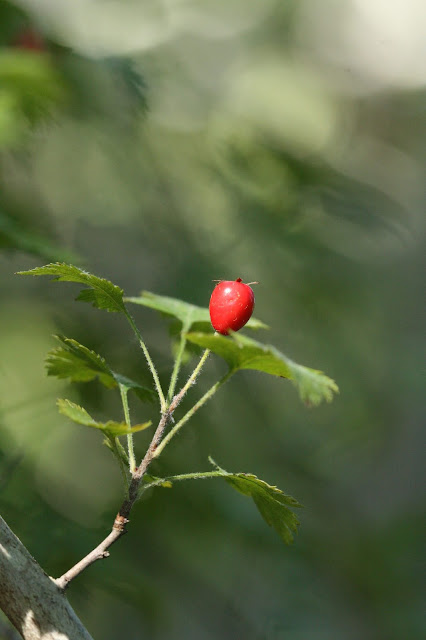Birds Need Fruit Too
 Arrowwood Viburnum (V. dentatum) |
 |
Simpson stopper (Myrcianthes fragrans)
A lot is written about the need that birds have for invertebrates to feed their nestlings. It is true that such food is a critical link in creating a living landscape. Invertebrates are the key to a great many things and everything we do to promote them in our landscapes is critical too. Invertebrates feed a great many things. They also serve as the vector to pollinate our flowering plants and when they do, it creates the other critical food source for birds and other wildlife - fruit.
The need to provide fruit for birds is often lost in the discussions I read in other literature that discuss the importance of native plants for birds. That is a significant omission and it must be rectified if our landscapes are truly to function in the way we desire. The truth is that very few birds rely on insects and other invertebrates during the winter months. Even birds such as woodpeckers will use fruit during this critical time. Bluebirds, swallows, and a great many other birds that feed almost exclusively on insects during the rest of the year, switch to a largely fruit-based diet in the winter. Most insects are dormant during the winter months and are difficult to rely on. The need that nestling birds have for a higher protein diet disappears as soon as they are fledged. Birds do not require it and it is largely unavailable to most. That's when most birds switch to fruit - soft fruit and seeds.
Many of the wintering birds that I now have, including the migrants like catbirds, rely on my landscape for fruit and seeds which is why so many of the woody plants that I have added here play this role as well as attracting pollinators. The firebush (Hamelia patens) that is now old enough to flower profusely is also making fruit. Its flower production is declining as each week passes, but the fruit is everywhere. Shortly, it will become the focal point for many of the birds that will spend the winter with me. The Simpson's stopper will likely bloom again shortly. It seems to do so twice a year and it is this late fall bloom that will produce the most valuable fruit. Some of my plants, like the parsley and littlehip haws and the various viburnums are not yet mature enough to produce fruit, but that is why I've included them in my landscape plan. Their small succulent fruit are important for birds.Fruit that are not present in winter are not nearly as valuable as those that are. Small fruit are more important than large ones. The acorns of oaks feed very few birds; it's the small succulent fruit that does.
There are no "best" plants for this nor are there ones that should exclude others. The real key to any living landscape is diversity. In an earlier post, I listed the various woody plants that are now in my landscape. My degree of diversity may be more than I need, but having diversity is critical to success. It is not enough to plant a hedge of stoppers or a wall of beautyberry (Callicarpa americana). A good landscape might have both as well as half a dozen other species. As we plan our landscapes, it requires us to consider diversity as well as the individual traits of each of our planned plantings. Not all birds feed on the same fruit. We need many kinds if we are to feed many kinds of birds during the winter. Woody plants do not produce fruit until they are mature enough to do so, so it takes time and planning to do this well. That time is time well spent.




Comments
Post a Comment